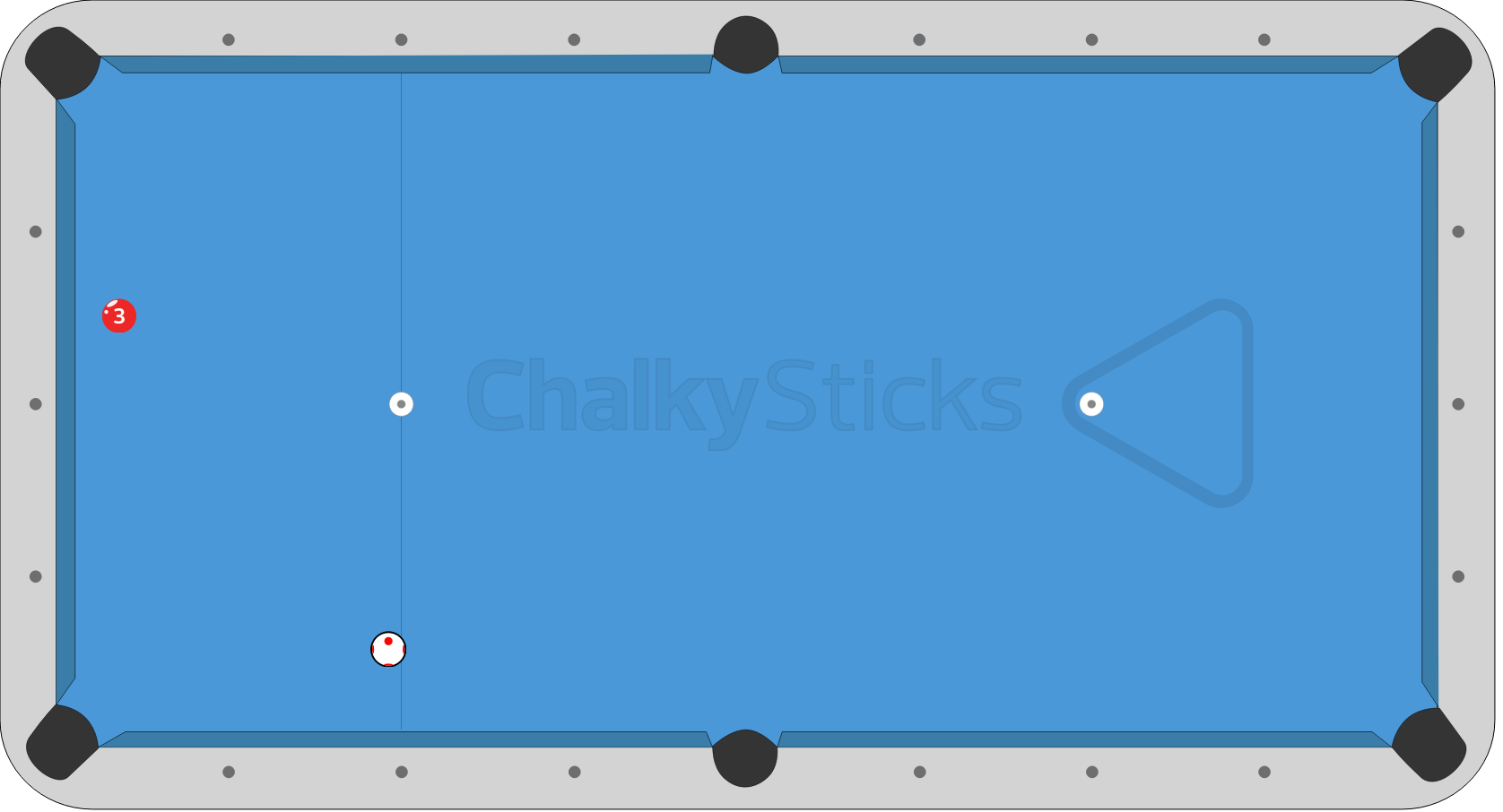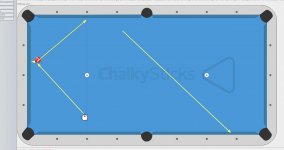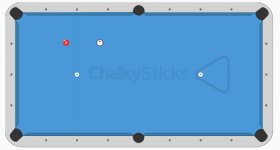I am practicing a drill where the video shows a roughly 35-40 degree angle. Simple shots, one is OB 1" off the head rail between 1st and second diamond and Cue Ball 2-2 1/2 diamonds from the pocket and 3" from the long rail. This creates an angle that looks to be 35-40 degrees. You pocket the ball with running English and go two rails back out to the middle of the table. There are several similar shots, always the goal is to get back to the center of the table.
I notice I have to use a lot more spin than the instructor says he is using to get there on all of the shots. If I use an angle more like 22 1/2 degrees everything works like the video but with the greater angle I have to use a lot more English.
What I wonder is if it is because I am playing on an 88" table vs a 96". It is really hard to tell from a video what all the angles are. I am setting the shots up based on relationship to the diamonds but I am thinking my distances are much tighter so I either need more spin or less angle to make them work more naturally. Note on this diagram the angle looks smaller than on my table. This looks more like 25 - 30 degrees.
What say you?

I notice I have to use a lot more spin than the instructor says he is using to get there on all of the shots. If I use an angle more like 22 1/2 degrees everything works like the video but with the greater angle I have to use a lot more English.
What I wonder is if it is because I am playing on an 88" table vs a 96". It is really hard to tell from a video what all the angles are. I am setting the shots up based on relationship to the diamonds but I am thinking my distances are much tighter so I either need more spin or less angle to make them work more naturally. Note on this diagram the angle looks smaller than on my table. This looks more like 25 - 30 degrees.
What say you?

Last edited:

